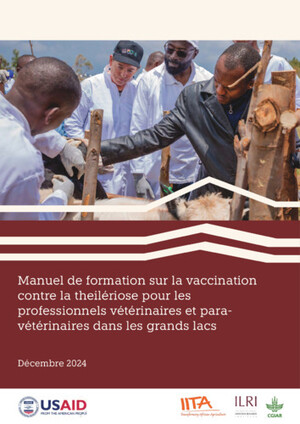
Operational research in Indonesia for more effective control of highly pathogenic avian influenza
This project aims at assessing five strategies to control highly pathogenic avian influenza (HPAI) in Indonesia. The control scenarios will be implemented through a joint HPAI control program of the Government of Indonesia and the Food and Agriculture Organization of the United Nations (FAO). The project also includes a suite of targeted research activities.
OBJECTIVES OF THE OPERATIONAL RESEARCH
- Establish a system of participatory epidemiological impact assessment that monitors both behaviour change and changes in disease incidence.
- Measure the epidemiological impact of five HPAI control scenarios at the district level.
- Conduct targeted research to answer specific questions of immediate importance to HPAI control in Indonesia.
OPERATIONAL RESEARCH ACTIVITIES
The pilot study will use the participatory disease surveillance and response (PDS/R) system to implement five scenarios or treatment groups in six provinces of Indonesia. One district per province will be randomly selected to be included in each of the treatment groups. The five scenarios are described below.
- Baseline scenario: This is the control group and represents the standard PDS/R approach consisting of three PDS and two PDR teams.
- Immediate response with ring vaccination fully supported: This scenario consists of the standard PDS/R program and full support for ring vaccination in terms of material and guidance. The ring vaccination consists of either a single vaccination or a two-vaccination treatment where the second vaccination is a booster delivered three weeks after the first.
- Intensive immediate response with ring vaccination and culling fully supported: This scenario is based on the full implementation of the standard PDS/R immediate containment response recommendation. The districts participating in this scenario will be fully engaged to implement the policy of focal culling and ring vaccination.
- Immediate response with socially marketed vaccination: This scenario includes both the immediate response and a concerted effort to facilitate the implementation of a community-based preventive vaccination program. The vaccine will be made available for purchase through practical community-level mechanisms.
- Immediate response with preventive mass vaccination: This scenario consists of the immediate response supported by a prevention plan that includes quarterly mass vaccination; vaccination costs are covered by the public sector. The mass vaccination is coordinated by the veterinary services through the PDR teams, but is delivered by local intermediaries to compartmentalize the risk of disease spread.
TARGETED RESEARCH ACTIVITIES
- Assessment of the efficacy of the vaccination program in Kampong poultry
- Evaluation of the sensitivity and specificity of the PDS system
- Facilitation of sustainable access to HPAI vaccine
- Estimation of the critical community size required to sustain transmission
- Strengthening of the analytical capacity of the PDS/R database including spatial analysis of the cluster of outbreaks relative to markets and transport networks
- Estimation of the transmissibility in chickens at different levels in the contact structure of the population
- Estimation of transmissibility in other species (ducks, quail, pigeons) at the flock level
- Analysis of the cost of control alternatives
PROJECT LOCATION
Six provinces of Indonesia: Bali, East Java, Lampung, North Sumatra, West Java and Yogyakarta. There are six randomly selected districts per scenario or treatment group.
PARTNERS

















